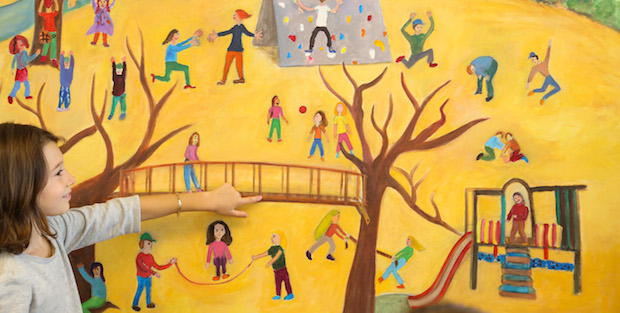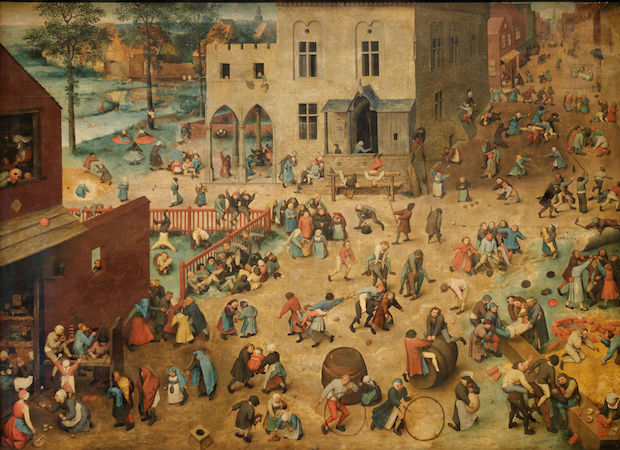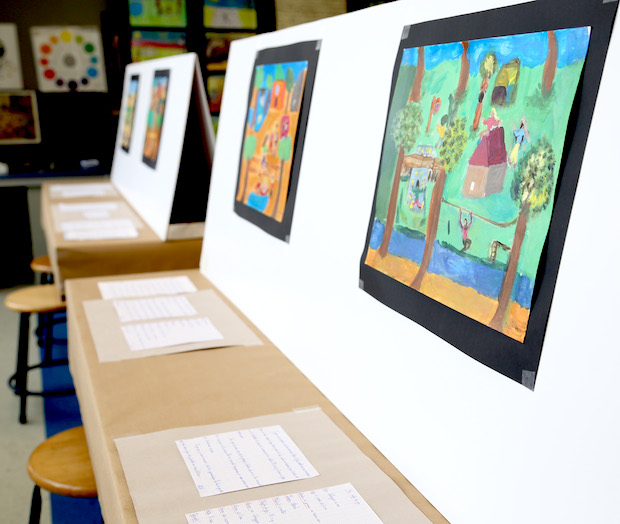Le tableau de Peter Bruegel, Les Jeux d’enfants (1560).
Bruegel’s painting Children’s Games may be 500 years old, but it’s very current in the eyes of our CE2 D students. For six months this past spring, the third-grade students studied and then created their own giant painting inspired by the work of the famous Flemish painter.
 Early on in the project, the students examined the painting to identify all 91 of the games depicted in it. “We were able to study language and French and English vocabulary by examining the games. Many of them are still played today,” said their teacher, Delphine Martin. For example, a game called colin-maillard at the time is now called Marco Polo in English and jouer au chat in French, and a zip line is called a tyrolienne in French.
Early on in the project, the students examined the painting to identify all 91 of the games depicted in it. “We were able to study language and French and English vocabulary by examining the games. Many of them are still played today,” said their teacher, Delphine Martin. For example, a game called colin-maillard at the time is now called Marco Polo in English and jouer au chat in French, and a zip line is called a tyrolienne in French.
Delphine Martin, French teacher.
At the same time that students worked on their vocabulary, they also went to the gym to watch and sketch the body movements of students as they played games. Ultimately, the young painters were asked to recreate their individual paintings on one giant shared canvas.
Connecting subjects
“Ït’s not easy for children of this age to come back again and again to work on one project,” says Mrs. Martin. It requires a certain rigor and discipline that nine-year-old Julian acknowledges. “My drawings got better and more realistic with each try,” he said. “Just like in math or when you conjugate verbs, the more you practice, the better you get,” said the young student, whose favorite sport, by the way, is swimming.
Students made individual paintings of their games of choice before painting them directly in acrylic on the final shared giant canvas.
This project is typical of an interdisciplinary approach across the Primary School. “We want our students to understand that language, math, history and art are interconnected. You cannot think of them in silos,” says Mireille Miller, art teacher in Primary. Indeed, taking the time to delve deeply into the work from many perspectives was as at the heart of this special project.
“I want the children to appreciate all that goes into a single painting,” adds Mrs. Miller. “The next time they go to the Metropolitan Museum of Art or another museum, I want them to have an understanding about how to really examine a painting.”
The final painting, created by 3rd graders (CE2D), is about 5 feet tall by 6 feet wide.
About the Author :
Former journalist, Cecile is passionate about multimedia storytelling. With her camera, notepad and microphone, she enjoys telling the great stories that are happening at the Lycée. Cecile was formerly senior communications manager at the school.




